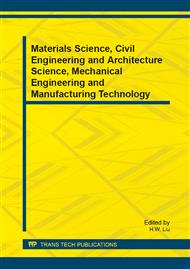p.26
p.30
p.36
p.40
p.44
p.48
p.53
p.57
p.61
Research of a New Type of Solar Cell Materials
Abstract:
Solar energy is the inexhaustible,enewable Energy. The solar cell is the solar light energy into electricity. The unique advantages of solar cell. Potential, more than wind, hydro, geothermal energy, nuclear energy and other resources, is expected to become the main pillar of power supply in the future. This paper studies that the main parameters of monocrystalline crystal silicon solar battery: the junction depth and superficial concentrations influence on electrical characteristics of monocrystalline silicon solar battery. The result shows that for maximum efficiency, it is bound to get the largest possible open circuit voltage, short circuit current and fill factor of the product, therefore, it is necessary to control these two parameters, the junction depth and doping parameters. If the junction depth is constant, with the increased superficial doping concentration of monocrystalline silicon solar battery, the photoelectric conversion efficiency of the battery increases slowly at first and then rapidly decreases, and the deeper the junction depth is, the more obvious trend of the photoelectric conversion efficiency is.
Info:
Periodical:
Pages:
44-47
Citation:
Online since:
January 2014
Authors:
Price:
Сopyright:
© 2014 Trans Tech Publications Ltd. All Rights Reserved
Share:
Citation:



